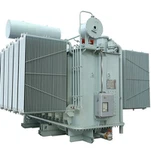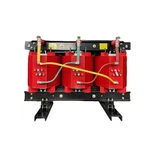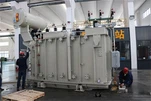In a transformer, main insulation and longitudinal insulation are two key insulation concepts, each referring to the insulation structure in different parts of the transformer. They are responsible for withstanding different voltage stresses and ensuring the safe operation of the transformer.
1. Main Insulation
Definition: Main insulation refers to the insulation between the transformer windings and the ground (usually the transformer's core or tank). Its primary function is to withstand the voltage difference between the windings and the grounded parts, i.e., the full voltage.
Function: The design of main insulation needs to ensure that the windings are electrically isolated from the ground under high-voltage operating conditions, preventing breakdowns or short circuits. This insulation typically consists of insulating paper, insulating oil (in oil-immersed transformers), solid insulating materials like resin, etc.
Characteristics: Main insulation must be capable of withstanding the highest power frequency voltage, lightning impulse voltage, and switching impulse voltage, making its insulation level the highest.
2. Longitudinal Insulation
Definition: Longitudinal insulation refers to the insulation between adjacent coils within the transformer windings, specifically between different turns or layers within the same phase winding. Its purpose is to resist the inter-turn or inter-layer voltage induced by electromagnetic forces within the winding.
Function: The design of longitudinal insulation needs to ensure uniform voltage distribution within the winding, preventing inter-turn or inter-layer short circuits, thus ensuring the normal operation of the transformer.
Characteristics: Longitudinal insulation withstands lower voltage compared to main insulation but must have sufficient mechanical strength and insulating performance in the complex electric field environment within the windings. It is usually composed of insulating varnish, insulating paper, etc.
Summary
Main Insulation is the insulation between the windings and the ground, withstanding the highest voltage stress and being one of the most critical parts of the transformer insulation.
Longitudinal Insulation is the insulation between adjacent turns or layers within the winding, primarily preventing inter-turn or inter-layer short circuits, ensuring electrical isolation within the winding.
These two types of insulation work together to ensure the safe and reliable operation of the transformer under high voltage and complex electromagnetic conditions.










